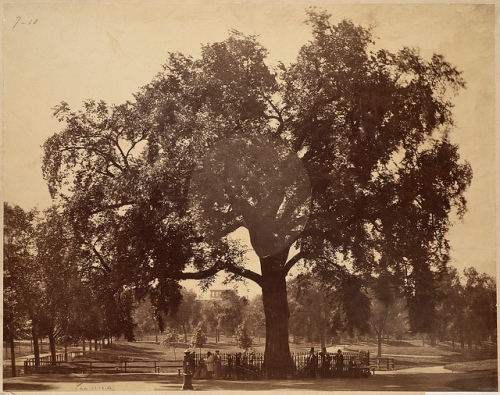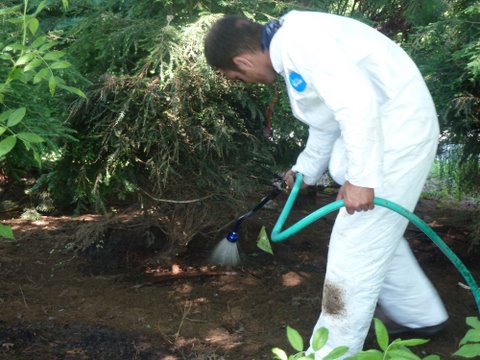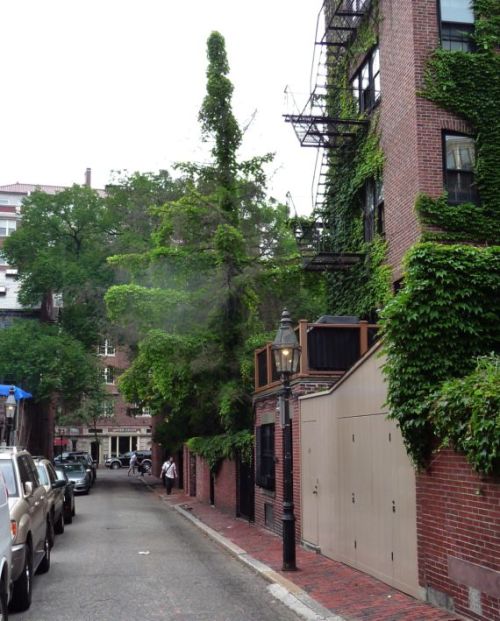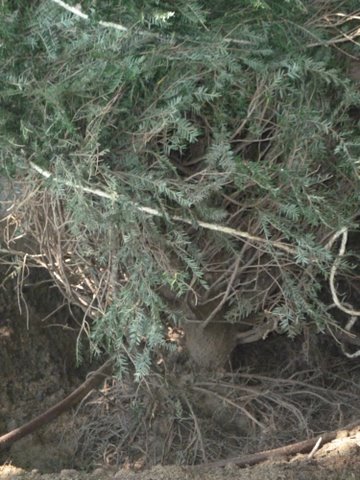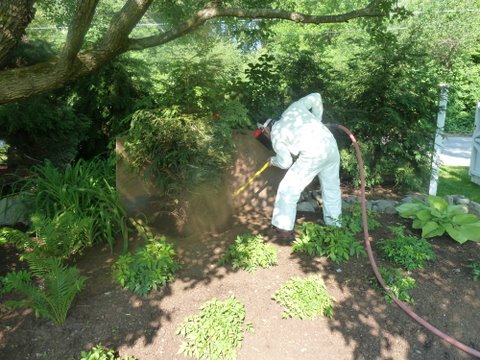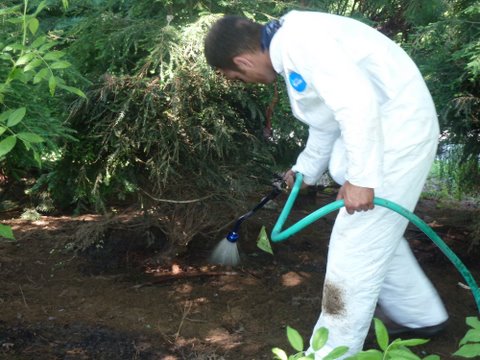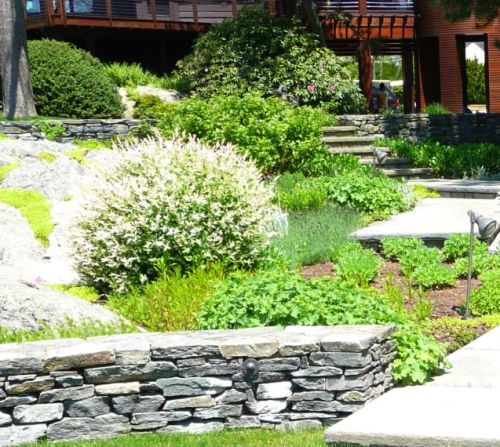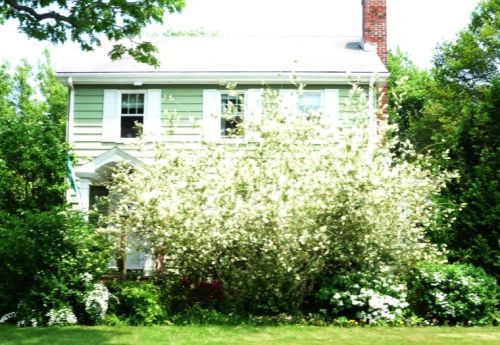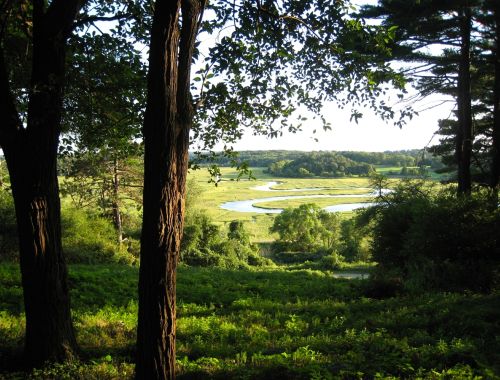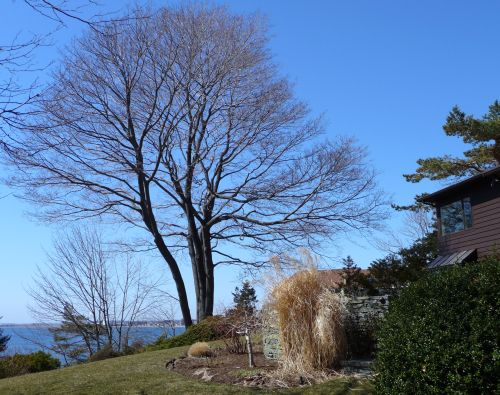In my work doing residential landscape architecture, I have encountered a number of instances where someone has bought a house on a sloping piece of land, getting what seems to be a steal. Usually, the buyer/client first tackles work on the house, revising its interior, and sometimes its exterior, to make it just as he/she wants it to be. House modifications can take years. When the house update is done, the homeowner turns his/her attention to the landscape. Most people want as much usable outdoor space as possible: a patio is a pleasant place to sit, a big, level lawn lets kids play comfortably and within sight, and walking, driving, swimming, or playing sports are all easier on flat surfaces. And it’s when the owner of a sloping site wants to enlarge their usable domain that it becomes clear why the dream house was such a bargain.
Why? Because slopes are expensive to unslope.
For people to use the land immediately around their house with any degree of comfort, it’s necessary to make level areas. A patio typically has a cross-pitch or slope of not more than 2% (just enough to drain water), and a lawn that slopes no more than 5 or 6 percent is best for active kids to organize and play games on. When a house is built on really noticeably sloping ground, the grade can measure anywhere from 8 to 15 percent, or more.
Sometimes earthen banks can hold up a level area; sometimes strategically placed boulders can do the job; often large retaining walls are necessary. Where surface area is scant, retaining walls may be the most efficient way to hold land level. Walls tend to be costly.
To start from a different point: A couple of years ago, I had the good fortune to visit a friend in Konstanz, Germany. While there, we took a number of side trips into Switzerland. We punctuated our train trip to Appenzell, Switzerland (home of many cows and of Appenzeller cheese, a famously stinky but delicious local specialty) with a visit to St. Gallen, home of a UNESCO World Heritage site, the Library of the Abbey of St. Gall.
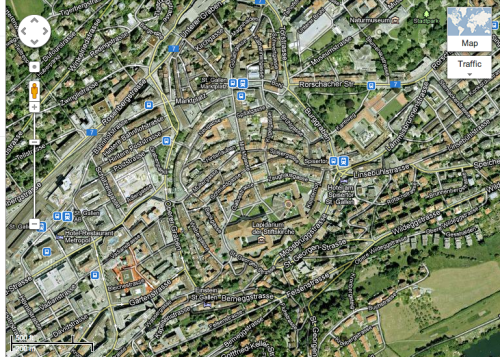
St. Gallen, Switzerland, from the air. The medieval walled city core is clearly visible among the more regular fabric of later-built streets and buildings. The Abbey and its World Heritage Site Bibliothek can be seen at about four o'clock in the walled part of the city.
The Bibliotek (Library) was closed when we arrived. We were ready to take a rest anyway, so found a spot on the spacious and sunny courtyard lawn and got out a picnic lunch. The day was bright and only slightly cool; though cars puttered by outside the court and a bell nearby clanged the hour and several other people sat on the grass and on nearby benches, the courtyard felt extraordinarily tranquil and pleasant. We munched and chatted, and I tried to put my finger on what made the courtyard feel so different from the surrounding area.

Look closer at the Abbey and its grounds. It takes up a large area within the walled city, and though the surrounding land slopes to the northwest, (that is, toward the photo's top left corner), the huge Abbey courtyard is almost perfectly level.
I had been thinking about the slope/cost issue for a quite some time, and it sprang to mind again in that peaceful abbey close. From the railroad station in the valley bottom, we had climbed winding medieval city streets to get to the Abbey; the walled city around the Abbey sat considerably higher than the station itself. Outside the three-sided Abbey complex, streets bent and sloped against the thick walls of the Roman Catholic enclave. Inside, green grass carpeted an utterly level quadrangle, muffling sound and lying like a tablecloth on a tabletop

Outside the Abbey walls is an orderly but dense fabric of masonry buildings and narrow streets that wind up and down the hilly terrain. Inside the Abbey walls, the utterly level and open ground of this tranquil courtyard puts on display the power and wealth of the Church that built it. Photo by kind courtesy of Galen Frysinger, at http://www.galenfrysinger.com/
In this Swiss city, slope is a fact of life. Buildings themselves do double duty as retaining walls; the back door of a house here can easily be situated a full floor above the front door. The city fabric is tightly woven, to conserve energy and again, because amending long sloping frontages can be expensive. Most homes are built cheek by jowl, with little or no space between houses.
The Church was and is a wealthy and powerful homeowner/landowner, as evidenced by its leveling of a sizable piece of the town’s steep foothill to make a vast piece usable ground. The fact that the courtyard lies in the middle of this densely woven city, and that it is given over to luxurious lawn sends a quiet but clear message of power and wealth. While the elegant and extremely solid buildings convey that message, the carving out of level outdoor space speaks just as definitively about the ability of this particular institution to make unlevelled places plain.
